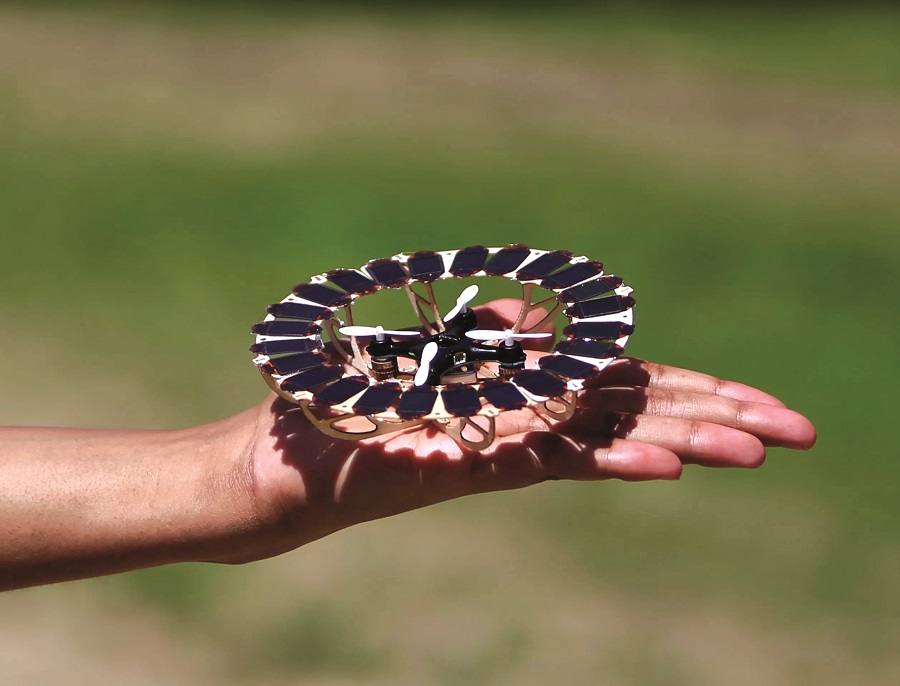Lightweight perovskite solar cells meet stability challenge

Researchers at the Johannes Kepler University (JKU) in Linz have developed a lightweight solar cell that is suitable for UAVs, writes Nick Flaherty.
The solar cells have a power output of up to 44 W/g and a comparatively high level of stability, despite using perovskite materials, which can have a limited lifetime.
The group of researchers – from the Department of Soft Matter Physics and the LIT Soft Material Lab at JKU, and the Linz Institute for Organic Solar Cell – developed a flexible solar cell that is 2.5 um thick, but still has a conversion efficiency of 20.1 % with an open-circuit voltage of 1.15 V.
The researchers fitted a palm-sized, commercial Solar Hopper quadcopter UAV with 24 x 1 cm2 cells in the frame, making up just 1/400 of its total weight. The configuration enabled the UAV to operate self-sufficiently and perform consecutive charge-flight-charge cycles without wired recharging.
For reliable, stable and flexible solar cells with a high power-to-weight ratio, there needs to be a balance between low gas and moisture permeability, high flexibility and transparent plastic substrates plus sturdy photovoltaic materials.
The cells are built with alpha-methylbenzyl ammonium iodide as the photoactive perovskite layer, placed directly onto an ultra-thin polymer foil coated with a transparent aluminium oxide layer, to ensure environmental and mechanical stability without compromising on weight or flexibility.
UPCOMING EVENTS























